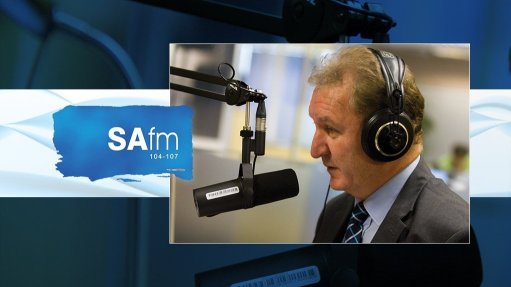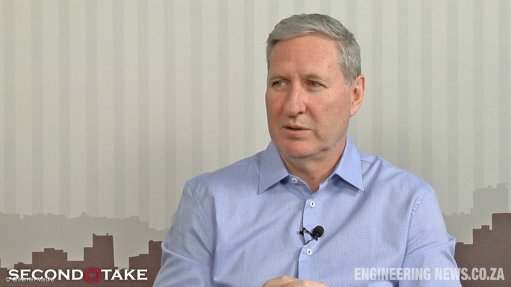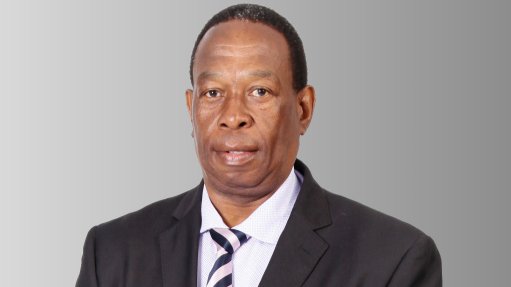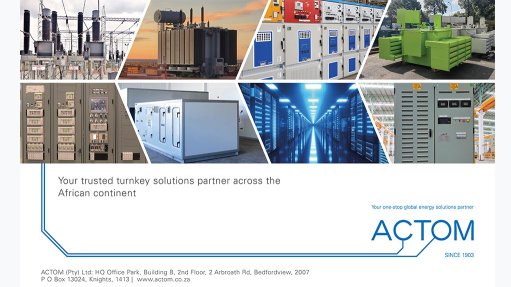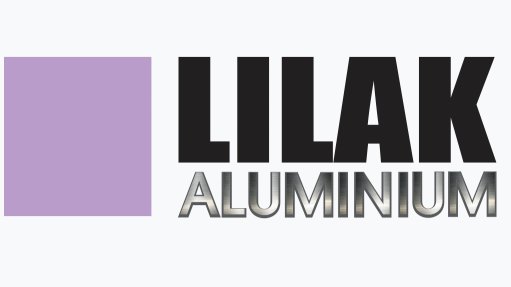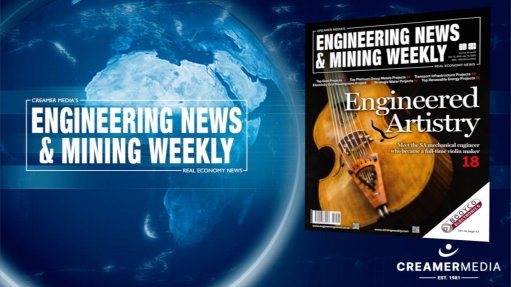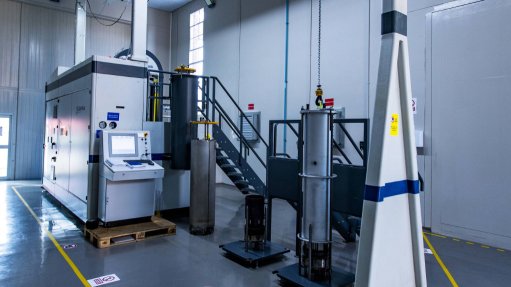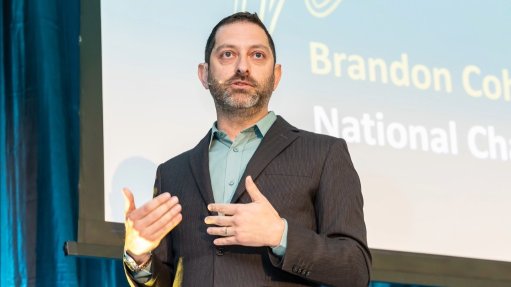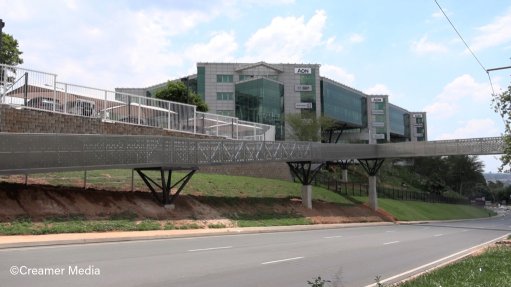Panellists highlight challenges, opportunities in localising manufacturing

A group of expert speakers unpack the inputs, support and incentives required to grow a competitive manufacturing sector in South Africa in a Creamer Media Webinars-hosted event.
Import tariffs announced and, in some instances implemented, by US President Donald Trump have contributed to significant changes to global trade and pose significant challenges for the South African automotive component manufacturing sector.
South African manufacturers, however, have an opportunity to tighten trade relationships with other African countries and the EU.
This was highlighted by National Association of Automotive Component and Allied Manufacturers (Naacam) policy and regulatory affairs head Beth Dealtry during Creamer Media’s ‘Local manufacturing webinar’, held on April 23.
“At the moment, from an export perspective, that's probably ironically where both the biggest challenge sits, but equally, the biggest opportunity is navigating that uncertainty and making the most of it and finding the silver linings where they exist,” she said.
Dealtry encouraged local manufacturers to diversify their export markets, adding that US import tariffs had expedited the need for the creation of an African ecosystem – while most African countries have committed to increase intra-African trade under the African Continental Free Trade Area, implementation had not been as fast as was needed.
“We need to be strategic as a continent and work together as a continent to identify . . . pockets of excellence in the different countries, and work together rather than all of us trying to produce the exact same thing and sell it into the same market. So there needs to be a greater level of coordination there, but I think it is the big opportunity”.
Facilitated by Manufacturing Circle executive director Philippa Rodseth, panellists of the webinar included Steel and Engineering Industries Federation of Southern Africa COO Tafadzwa Chibanguza, SYSPRO Europe, the Middle East and Africa and Asia-Pacific strategic sales head Johan du Toit and Discovery Green head Andre Nepgen.
Panellists discussed topics such as manufacturing’s role in driving economic growth and job creation, as well as how the sector could remain competitive despite rising costs and skills shortages.
With this in mind, Dealtry noted that the biggest challenge in Africa was slowing domestic demand, with vehicle production and sales having been “pretty stagnant” over the past decade, while import penetration had increased.
She explained that this ultimately impacted on production volumes, noting that when original-equipment manufacturer production volumes were impacted, so were component production volumes.
Hence, she noted the importance of economies of scale in the underlying competitiveness of the sector.
“As production volumes reduce, we are certainly finding that that's impacting competitiveness in the sector.”
Dealtry also highlighted the need for testing infrastructure, public-private partnerships (PPPs) and skills development to support localisation in the sector.
“The reality is, we have to think slightly outside of the box in what is a relatively constrained domestic environment,” she said.
On the other hand, Dealtry highlighted opportunities in the local new-energy vehicle space. She argued that South Africa was well-positioned to localise high-value components, given the country’s access to raw materials and manufacturing capabilities.
“We do have really capable, world-class companies in our country and it’s about getting them greater exposure, greater scale,” she added.
In this vein, Chibanguza highlighted constrained fixed capital formation domestically and municipal service delivery issues as major challenges facing the sector.
He discussed the need to incentivise private demand in terms of buying locally, adding that collaboration between the public and private sectors in the deployment of projects through PPPs provided a significant opportunity in this regard.
“A mindset shift that is actually needed is . . . dropping this ideological idea that only a centralised place can do all this planning, but you distribute it by letting the private sector and public sectors work together.”
Chibanguza also noted the role of policy reforms in supporting the manufacturing sector's growth.
He highlighted the important role of the domestic economy in creating local demand, especially in the context of a constrained macro environment.
“The domestic economy has an important role to play in creating that consistent baseload demand, then the export market is, in a way, a very lucrative top up, that's the role it should play, where through all the cycles, you have that baseload demand.
“A big part of that is a policy choice to increase gross fixed capital formation, transferring it from consumption to fixed investment, allowing the private sector to contribute in that play. That way you raise demand and solve a lot of issues,” he said.
Other challenges highlighted included South Africa’s electricity issues and the local manufacturing sector’s slow adoption of new technology.
With this in mind, Du Toit discussed the importance of adopting relevant technologies that enabled companies in the sector to make data-supported decisions, drive competitiveness and manage costs.
Additionally, Nepgen noted the impact of rising electricity costs on local manufacturers, which had driven many manufacturers to adopt strategies such as on-site solar and battery systems, or wheeling, in order to remain competitive.
Nepgen advocated for keeping a longer-term view in mind when adopting renewable energy, noting that the more renewable energy a business adopted, the more protection it had against looming carbon tax tariffs and fluctuating electricity prices.
Article Enquiry
Email Article
Save Article
Feedback
To advertise email advertising@creamermedia.co.za or click here
Comments
Press Office
Announcements
What's On
Subscribe to improve your user experience...
Option 1 (equivalent of R125 a month):
Receive a weekly copy of Creamer Media's Engineering News & Mining Weekly magazine
(print copy for those in South Africa and e-magazine for those outside of South Africa)
Receive daily email newsletters
Access to full search results
Access archive of magazine back copies
Access to Projects in Progress
Access to ONE Research Report of your choice in PDF format
Option 2 (equivalent of R375 a month):
All benefits from Option 1
PLUS
Access to Creamer Media's Research Channel Africa for ALL Research Reports, in PDF format, on various industrial and mining sectors
including Electricity; Water; Energy Transition; Hydrogen; Roads, Rail and Ports; Coal; Gold; Platinum; Battery Metals; etc.
Already a subscriber?
Forgotten your password?
Receive weekly copy of Creamer Media's Engineering News & Mining Weekly magazine (print copy for those in South Africa and e-magazine for those outside of South Africa)
➕
Recieve daily email newsletters
➕
Access to full search results
➕
Access archive of magazine back copies
➕
Access to Projects in Progress
➕
Access to ONE Research Report of your choice in PDF format
RESEARCH CHANNEL AFRICA
R4500 (equivalent of R375 a month)
SUBSCRIBEAll benefits from Option 1
➕
Access to Creamer Media's Research Channel Africa for ALL Research Reports on various industrial and mining sectors, in PDF format, including on:
Electricity
➕
Water
➕
Energy Transition
➕
Hydrogen
➕
Roads, Rail and Ports
➕
Coal
➕
Gold
➕
Platinum
➕
Battery Metals
➕
etc.
Receive all benefits from Option 1 or Option 2 delivered to numerous people at your company
➕
Multiple User names and Passwords for simultaneous log-ins
➕
Intranet integration access to all in your organisation







